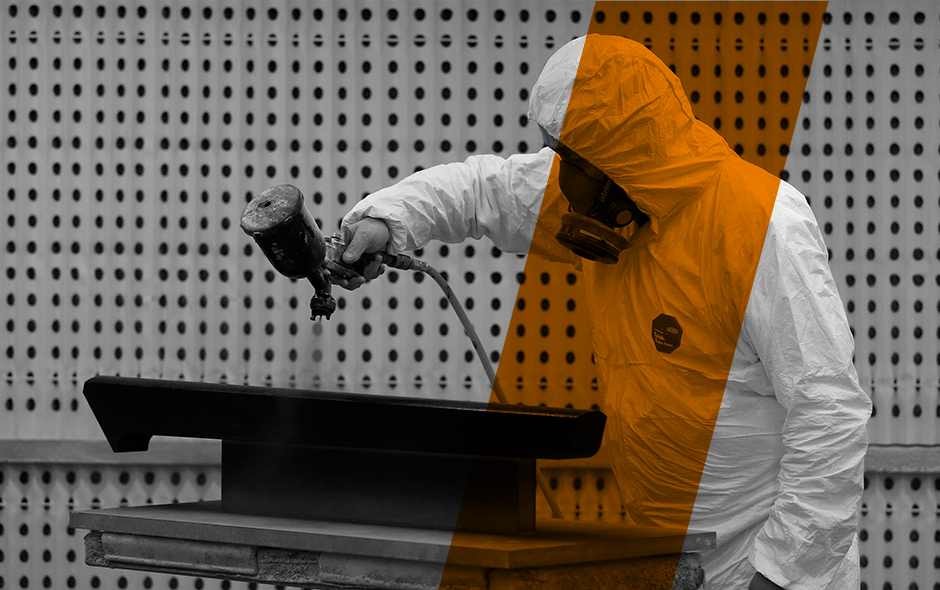Waterborne vs Solvent-Based Paint

GB Projects is constantly researching and learning about furniture manufacturing and finishing, passing our wealth of knowledge and experience onto you. Here, we discuss the differences and advantages of waterborne and solvent-based paint so you can make an informed decision about which to use for your next project.
What is the difference between waterborne and solvent-based paint?
A solvent-based paint is typically made up of 84% solvent content and 16% solids, whereas a typical waterborne paint will compromise of around 70% water, 20% solids and only 10% solvent.
Solvent-based paint can be easier to apply and has been traditionally thought to provide a better finish.
By contrast, waterborne paint is more user-friendly, easier to clean, and has a weaker smell than a solvent-based product. These are just some of the reasons we prefer waterborne paint at GB Projects.
Volatile Organic Compounds
VOCs (Volatile Organic Compounds) are chemicals found in large proportions of solvent-based paint, and in smaller quantities in waterborne paint. Their purpose is to act as a mechanism for transferring the paint from the tin to the surface in an even and flowing manner. As a result of higher VOC content, solvent-based paints have previously been regarded as providing better finishes. However, sadly, there are several disadvantages of using solvent-based paints.
What are the benefits of waterborne over solvent-based paint?
Whilst the end product is fundamentally the same, there are numerous advantages to using a waterborne paint:
- Waterborne paint is much cleaner for the environment as it contains fewer VOCs. During the drying process of any paint, VOCs are released into the air as toxic fumes and can linger for many years following use. In waterborne paint, VOCs do not persist in the air for as long, thus being much kinder to the environment.
- Waterborne paint is less of a hazard than solvent-based paint due to being less flammable.
- Use of PPE is not a mandatory requirement when using waterborne paint. It is a lot safer to use as it has far less solvent / toxin content. In addition, anyone exposed to the paint fumes for an extended or regular amount of time will be breathing in dangerous toxins caused by the solvent, leading potentially to headaches, nausea and dizziness.
Why does GB Projects want to make the switch to only using waterborne paint?
As a reputable and responsible manufacturer, we are constantly finding new ways to reduce our carbon footprint and put our employees at the heart of the decisions we make. Being sustainable is just one of our core values, and this means being as environmentally friendly as we can. Switching to only using waterborne paint is just one of the transitions we can make to be kinder to the environment and are better for our employees’ welfare.
We personally feel that, as a result of recent advances in paint technology, there is actually little difference in the performance of high-quality waterborne paint versus that of solvent-based paint. Therefore, we can continue to manufacture top-quality products for our clients using waterborne paint, whilst doing our bit to help the environment.




